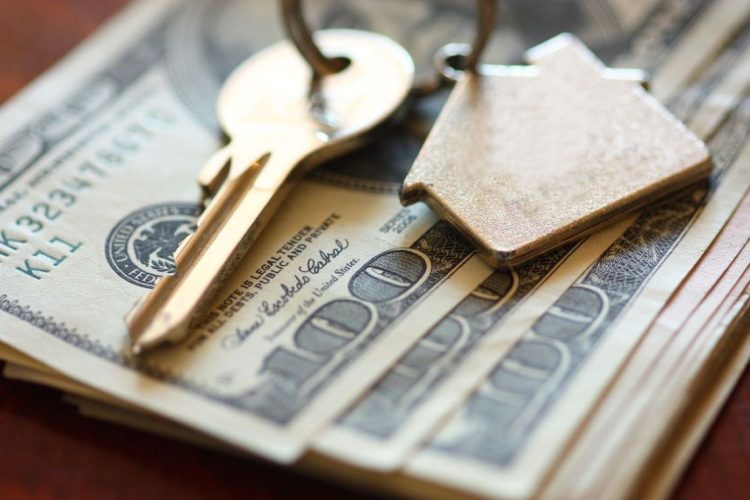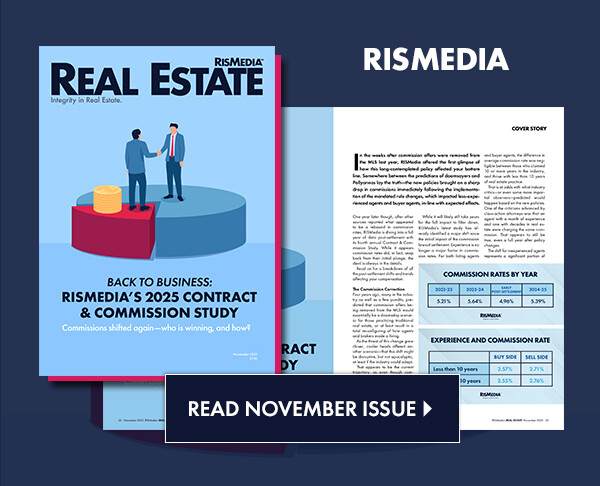Borrower activity is typically projected to increase during the fall, especially the months of September and October. Realtor.com® researchers predict that this year’s “best time to buy” would begin next week, from Oct. 12 to 18.
But mortgage applications have slowly begun to reduce in volume after a short-lived spike caused by the Federal Reserve’s recent 0.25% cut to interest rates. The Harvard Joint Center for Housing Studies (JCHS) projects that household growth will slow down in the coming decade, leaving much to be desired for the builders and other aspects of the market.
Given the decline in household growth and mortgage applications, cash transactions remain a notable avenue for buyers in the market.
Realtor.com’s analysis of trends in all-cash home sales reveals that roughly a third of homes sold in the first half of 2025 were paid for entirely by cash. On a national level, 32.8% of home sales were completed through all-cash transactions, which is down 0.6% from last year’s estimate.
Despite being slightly down from last year, all-cash transactions for 2025 remain well above the pre-pandemic measure of 28.6% of sales. The report states that, “Cash buying surged during the pandemic as investors competed for scarce listings, and it remains a powerful factor even as the market has cooled.”
Danielle Hale—Realtor.com’s chief economist—said, “Cash buyers have long been a fixture in the market, but their influence is more pronounced today than in pre-pandemic years.”
Although all-cash transactions account for a third of home sales, they’re divided on the economic spectrum. The report states that roughly 66% of homes sold for under $100,000 were paid in cash. But, home sales for properties priced under $100,000 accounted for only 7.2% of all home sales in the first half of the year.
About 35.2% of homes priced between $1 million and $2 million were paid for by cash, and about half of all homes above the $2 million mark were done through all-cash transactions. Cash payments dominate the ends of the spectrum, but the report notes that while homes priced between $200,000 and $750,000 had all-cash transactions slightly above 20%, the majority—about 62.5%—of all home sales in the first half of 2025 were for homes between this price range.
Typically, older households and buyers with significant equity are more likely to purchase without a mortgage, according to the report. The proceeds from prior home sales often goes into the purchase of the next property, but high-wealth buyers are less influenced by borrowing costs. The report notes that these buyers are more likely to decide between paying for their homes through cash or financing based on broader financial considerations.
“High-wealth buyers, investors and those with significant equity can move quickly and often win out in competitive situations,” Hale said. “For traditional, mortgage-reliant buyers, this can add another hurdle in an already challenging affordability environment.”
The share of buyers willing to pay for their homes through all-cash transactions varies by state.
Realtor.com examined each state—with the exception of South Dakota and Vermont due to data quality concerns—and found that the top five with the highest share of all-cash home sales are at the top for differing reasons:
- Mississippi (49.6%)
- Montana (46%)
- Idaho (45%)
- Hawaii (44.9%)
- Maine (44.4%)
According to the report, the high share of case sales in Mississippi is reflective of the state’s lower home price and abundance of rural areas, which have lower access to credit. Yet, Hawaii and Maine have higher costs in terms of housing. These states attract buyers looking for their second home, and are willing to pay in cash because they’re usually older and rich in equity. But both Hawaii and Maine’s share of cash sales is down from last year, by about 4% and 2.5%, respectively.
Montana and Idaho, however, are seeing more and more out-of-state buyers competing for homes, according to the report.
Although these states lead with the highest shares of cash sales, cities located in other states lead the nation in cash shares. Miami, Florida, has the highest share of all-cash home sales for metros at 43%, but this declined from the previous year by 1.5%. San Antonio, Texas, followed in second with cash shares at 39.6% and the greatest year-over-year increase of all metros, measured at 7.7%.
Other cities like Kansas City, Kansas; Birmingham, Alabama; Houston, Texas; and St. Louis, Missouri, had shares of all-cash transactions slightly below 40%. According to Realtor.com, these cities typically draw in strong investor interest for two reasons: Relative affordable housing in San Antonio, Birmingham, Kansas City and St. Louis, or through high-end international demand, which is prevalent in Miami and Houston, the report states.
In contrast, areas with the lowest share of all-cash home sales are Washington, Washington, D.C., Rhode Island, Maryland and Colorado. Each of these states are considered high-cost, according to Realtor.com. They have metro-driven markets with younger buyers who are more reliant on mortgages. Within these states are deep lending infrastructure that keeps cash less common, accounting for about a fourth of all home sales.
Yet most of the states studied had lower shares of cash sales than last year. Only seven states increased year-over-year, including West Virginia, which had the biggest increase year-over-year at 5.3%. New Mexico, Texas and New York followed at 4%, 2.8% and 2%, respectively. The report states that these areas had the biggest increases caused by low-price investor activity, in-migration of wealthier households and rebounding luxury demand.
On the other hand, Hawaii, New Hampshire and North Dakota had the sharpest drops in cash sales, all at or nearly 4% decreases year-over-year.
Overall, the report concludes with the idea that first-time buyers and lower-income households are still more reliant on financing. They struggle against buyers who can offer cash in markets where sellers prioritize speed and certainty, skewing the market so that groups more likely to pay in cash have an “outsized share of a smaller pool of sales.”
“Cash sales underscore the wealth concentration shaping today’s housing market,” Realtor.com Senior Economic Research Analyst Hannah Jones said. “If mortgage rates fall, we could see financed buyers regain ground, but for now, cash remains a powerful competitive advantage.”
For the full report, click here.











